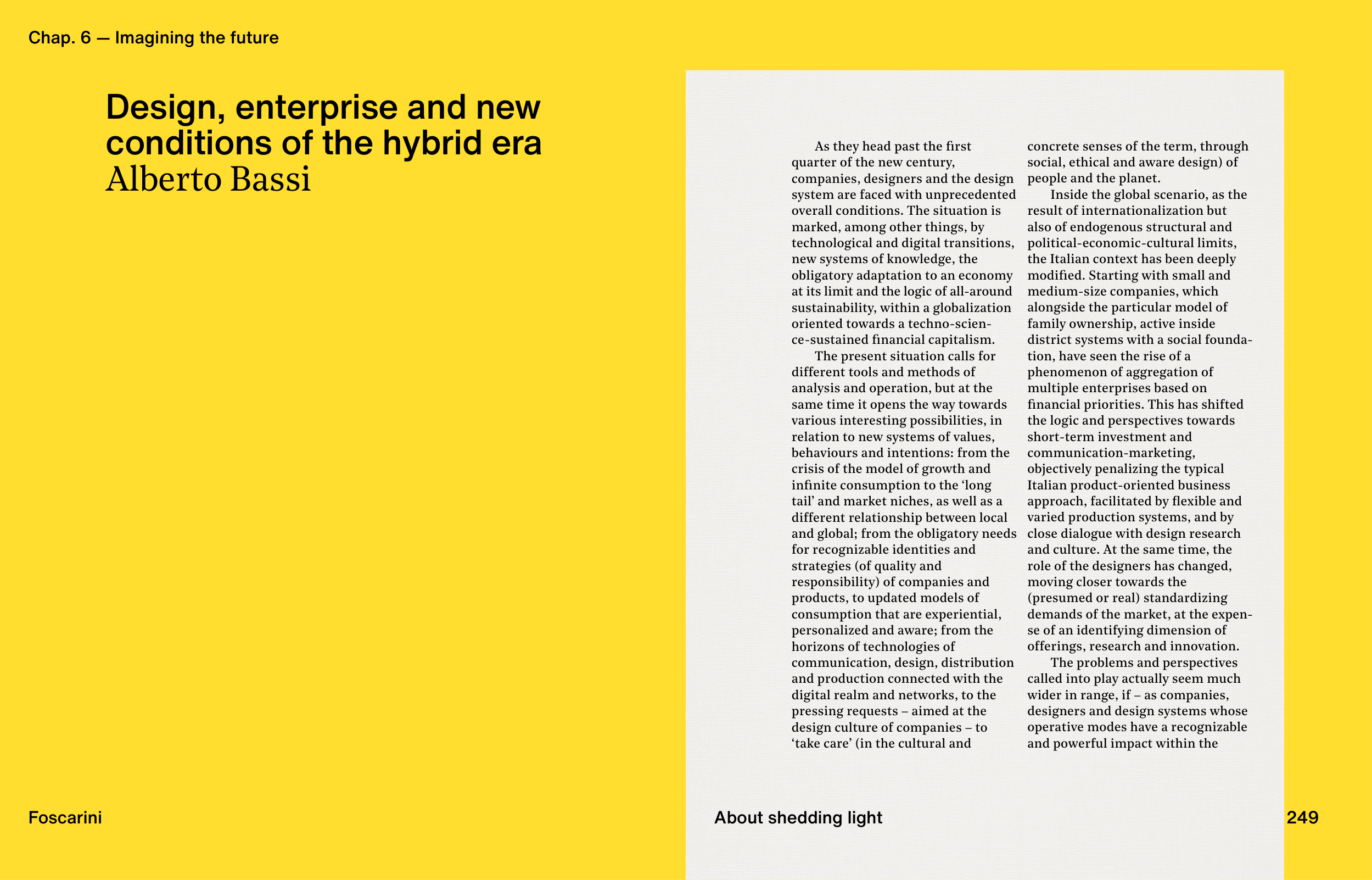249
Foscarini
Design, enterprise and new
conditions of the hybrid era
Alberto Bassi
Chap. 6 — Imagining the future
As they head past the fi rst
quarter of the new century,
companies, designers and the design
system are faced with unprecedented
overall conditions. The situation is
marked, among other things, by
technological and digital transitions,
new systems of knowledge, the
obligatory adaptation to an economy
at its limit and the logic of all-around
sustainability, within a globalization
oriented towards a techno-scien-
ce-sustained fi nancial capitalism.
The present situation calls for
different tools and methods of
analysis and operation, but at the
same time it opens the way towards
various interesting possibilities, in
relation to new systems of values,
behaviours and intentions: from the
crisis of the model of growth and
infi nite consumption to the ‘long
tail’ and market niches, as well as a
different relationship between local
and global; from the obligatory needs
for recognizable identities and
strategies (of quality and
responsibility) of companies and
products, to updated models of
consumption that are experiential,
personalized and aware; from the
horizons of technologies of
communication, design, distribution
and production connected with the
digital realm and networks, to the
pressing requests – aimed at the
design culture of companies – to
‘take care’ (in the cultural and
concrete senses of the term, through
social, ethical and aware design) of
people and the planet.
Inside the global scenario, as the
result of internationalization but
also of endogenous structural and
political-economic-cultural limits,
the Italian context has been deeply
modifi ed. Starting with small and
medium-size companies, which
alongside the particular model of
family ownership, active inside
district systems with a social founda-
tion, have seen the rise of a
phenomenon of aggregation of
multiple enterprises based on
fi nancial priorities. This has shifted
the logic and perspectives towards
short-term investment and
communication-marketing,
objectively penalizing the typical
Italian product-oriented business
approach, facilitated by fl exible and
varied production systems, and by
close dialogue with design research
and culture. At the same time, the
role of the designers has changed,
moving closer towards the
(presumed or real) standardizing
demands of the market, at the expen-
se of an identifying dimension of
offerings, research and innovation.
The problems and perspectives
called into play actually seem much
wider in range, if – as companies,
designers and design systems whose
operative modes have a recognizable
and powerful impact within the
About shedding light
249


